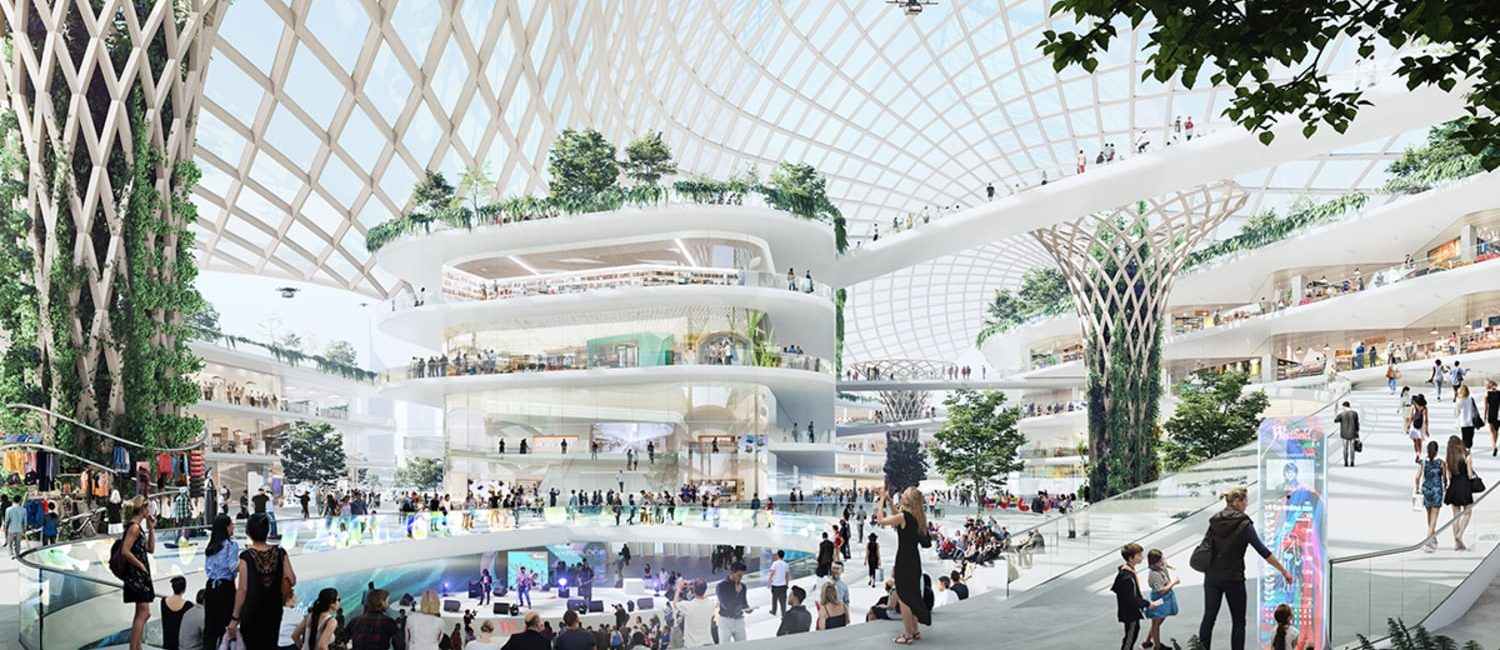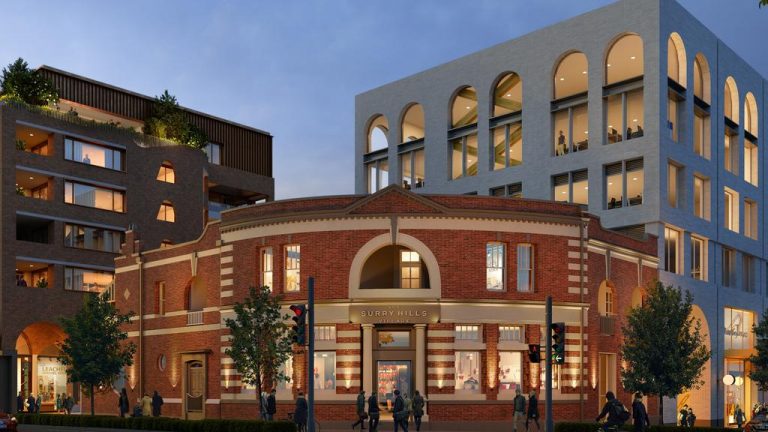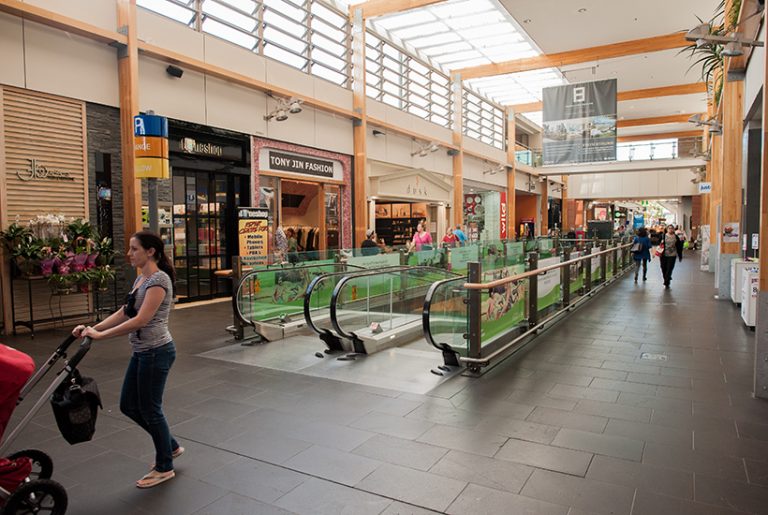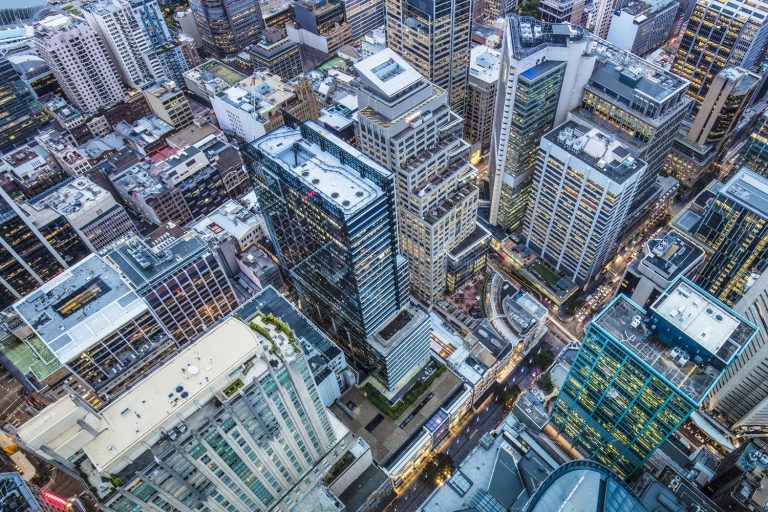A glimpse at the futuristic shopping centres of tomorrow

Shopping centres in Australia are undergoing a fundamental transformation as they continue to fight against the digital retail revolution and the consequences of Covid lockdowns – and the future looks almost unrecognisable.
Demonstrating a remarkable ability to pivot and innovate in the face of strong economic headwinds, they are morphing from old school air-conditioned boxes into modern and high-tech town squares, where community meets commerce.
And there’s an evolving mix of tenants, with medical services, libraries, beauty clinics, gyms, co-working spaces, and upmarket restaurants now sharing floorspace with supermarkets, department stores, fashion outlets, and homewares stores.
“The new civic squares, the new public meeting places – the town halls, if you like, of 21st century Australia – are the big shopping centres,” social analyst and demographer Mark McCrindle from McCrindle Research said.
“It’s not that 1980s and 1990s experience of walking into the mega shopping centre and almost being overwhelmed just by the retail.
“The newer developments are more walkable retail places – they are connecting with better integrated public transport, and they’re really established with greenery and sustainability and a variety of branded on shopping options.
“We’re seeing these centres mimicking the economic diversity of their communities.”
Shopping dominance comes under threat
According to the latest data published by the Shopping Centre Council of Australia (SCCA), there are 1630 shopping centres in Australia exceeding 1000sqm of gross lettable area.
The SCCA states that, on average, 22 new shopping centres have opened each year in Australia since 1957, when the first major metropolitan development was built in Brisbane’s Chermside. Many other existing centres have expanded through redevelopment.

The evolution of shopping centres will spark technological advancements. Picture: Westfield
The sector, which has been the mainstay of the Australian bricks and mortar shopping experience since Chermside opened its doors, suffered its first major disruption with the Global Financial Crisis and emerged bruised but still breathing.
But by then a new threat was emerging, with the internet spawning a convenient click-and-deliver online shopping experience that traversed borders, both national and international.
When online retail giant Amazon established its Australian operation in 2017, the days of traditional shopping seemed to be numbered.
In 2020, the Covid pandemic and resultant national lockdowns forced all but essential retailers to close their physical stores for weeks and even months, turning once-thriving shopping centres into eerie ghost towns.
Shoppers had no option but to turn to the web for their purchases. ‘For Lease’ signs started to appear on many shopfronts.

The CityLand mall in Dubai merges traditional retail with facilities you might find at a theme park. Picture: CityLand Dubai
But when lockdowns eventually lifted, people didn’t just stay online. Instead, they also began flocking back to shopping centres, particularly local suburban centres that were able to take advantage of a new work from home reality faced by many former daily CBD commuters.
“People returned to physical shopping because nothing beats an in-store experience from a tactile, sensory and social experience,” Paul Zahra, CEO of the Australian Retailers Association, explained.
“You can’t get that online. What online gives you is that convenience. Which is why shopping centres will never be dead.”
Innovation key to survival
Key to the revival in the fortunes of shopping centres is the nimbleness in which both centre owners and retailers can respond to the existential online and pandemic threats.
“When you talk about the digital revolution, the physical stores have been creating a pretty memorable bricks and mortar experience,” said Kate Bailey, a director at CBRE and its Head of Retail and Alternatives Research.
“When rents decreased during Covid, we started to see some of the little retailers take up bigger areas within shopping centres and create a customer experience in those stores through the use of technology and interactive displays.”

Westfield is leading innovation in the shopping centre space. Picture: Westfield
The mix of retail also continues to undergo a significant change.
“What we are seeing are things that we didn’t imagine before, like Tesla luxury car [dealers] appearing in a shopping centre,” Mr Zahra said.
“There’s a reinvention going on in shopping centres to become much more relevant as the traditional retailers have reduced their physical footprints.”
The addition of leisure and entertainment options like bars, restaurants, sporting facilities, and live music – with both indoor and outdoor areas – means that modern shopping centres are activated from early morning to late at night, adding to that community friendly, town square appeal.
“That entertainment space is doing really well at the moment and it’s becoming normal to go out to the shopping centre for dinner and then do an activity like a movie or 10-pin bowling there afterwards,” Ms Bailey said.
“These spaces are becoming hubs for different kinds of users. You might have entertainment that unlocks that precinct at night, and you might put some medical spaces in there, or a gym, that gets people in first thing in the morning.
“It’s about getting people through across the day rather than that 10am to 2pm peak when people might think about doing some clothes shopping.”

Futuristic features will define the shopping centre of tomorrow. Picture: Westfield
The centres have also found a way to attract people at all stages of life, according to Mr McCrindle.
“Shopping centres are really one of the few social institutions in our nation where you get all the generations mixing, from the youngest to the oldest, and I think that keeps our communities at their best.”
A glimpse into the future
The current buzzword in retail is ‘phygital’ – which describes the blurring of lines between physical and digital – and that appears to be where the future of shopping centres is headed.
“If you’re at the shopping centre today, you’ll see people on their devices and in the future there will be even more than that, but rather than being competitive channels, the online and the bricks and mortar will be working together,” Mr McCrindle predicted.
“At the moment, someone might look at an item in the store and then, if it’s a larger investment or if they’re just not quite sure about it, jump online and see whether they can get it cheaper elsewhere.
“But in the future, it will be a hybrid and integrated experience. Proximity technology will highlight that here we have a member or a frequent buyer or someone in a particular demographic and it will offer them some specific in-the-moment specials.
“Our devices will guide us through our shopping lists with inventories of what we’re looking for, even our grocery needs.
“The technology in the centre and in the store will talk to the technology that we carry. This virtual reality mixed with the real world will become far more normative.”

Expect rapid innovation in the shopping centre space. Picture: AFP
Mr Zahra thinks the future will be about maximising shopping centres’ entertainment offers, giving customers an experiential offering that goes beyond simple transactional activity.
“The newer developments are very much focused on entertainment and services and that’s the future of shopping centres,” he said.
“There will obviously still be a place for merchandise retailers, but we will see much more of a move towards entertainment.
“If you think about it, you know you can buy most of what you need online, so if you’re going to go to a shopping centre, you are you going because you want the full experience that’s broader than just shopping.”







